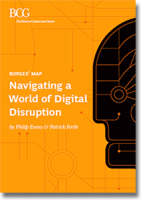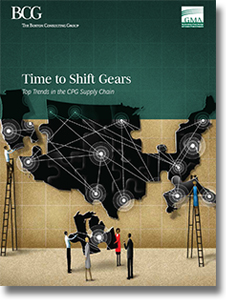Time to Shift Gears: Top Trends in the CPG Supply Chain
Daunting strategic and operational obstacles are taking a toll on consumer packaged goods companies' performance in terms of service levels, costs, and inventory, and traditional levers of improvement no longer work.
For a supply chain executive in the consumer packaged goods (CPG) industry, it’s a familiar situation.
A company, as it pursues an ambitious growth strategy, must adapt its business model to enter new and expanding channels.
It also must innovate to spur growth in an otherwise low-growth environment.
For its supply chain team, all of this means working even harder to make a network built for scale more agile and cost-effective.
At the same time, the team must keep up with the unrelenting service demands of the company’s retail customers.
Across sectors, CPG companies today face daunting strategic and operational challenges.
Providing a high level of service to a growing number of customers and channels is imperative to drive growth.
But doing so amid the capacity constraints of transportation providers is difficult.
Many CPG companies are finding that even with a “service at any cost” attitude, the tried-and-true tactics for boosting service are no longer working.
Indeed, the logistical obstacles have taken a measurable toll on CPG companies’ performance in terms of service levels, costs, and inventory.
Just how much are these challenges affecting CPG companies’ performance - and how are they driving planning and decisions about the future?
The 2015 Supply Chain Benchmarking Study, produced by the Grocery Manufacturers Association (GMA) and The Boston Consulting Group, examined the performance of leading grocery manufacturers’ supply chains to explore recent trends, practices, attitudes, and expectations.
This report crystallizes the top trends that emerged from the study, which involved 40 U.S. businesses of leading CPG companies.
What’s Related



Favorites





